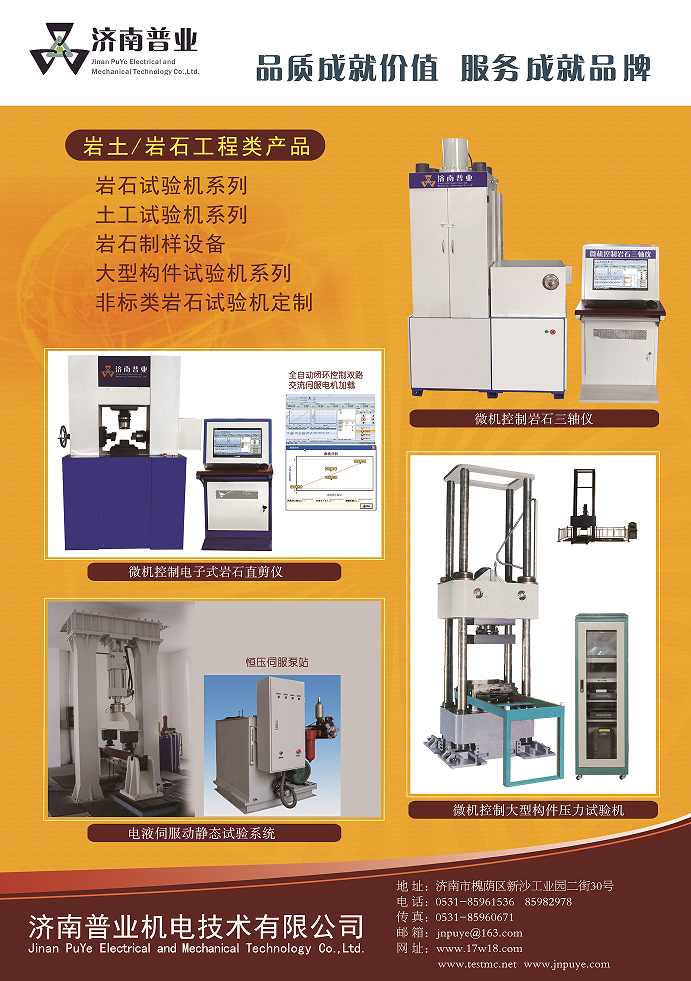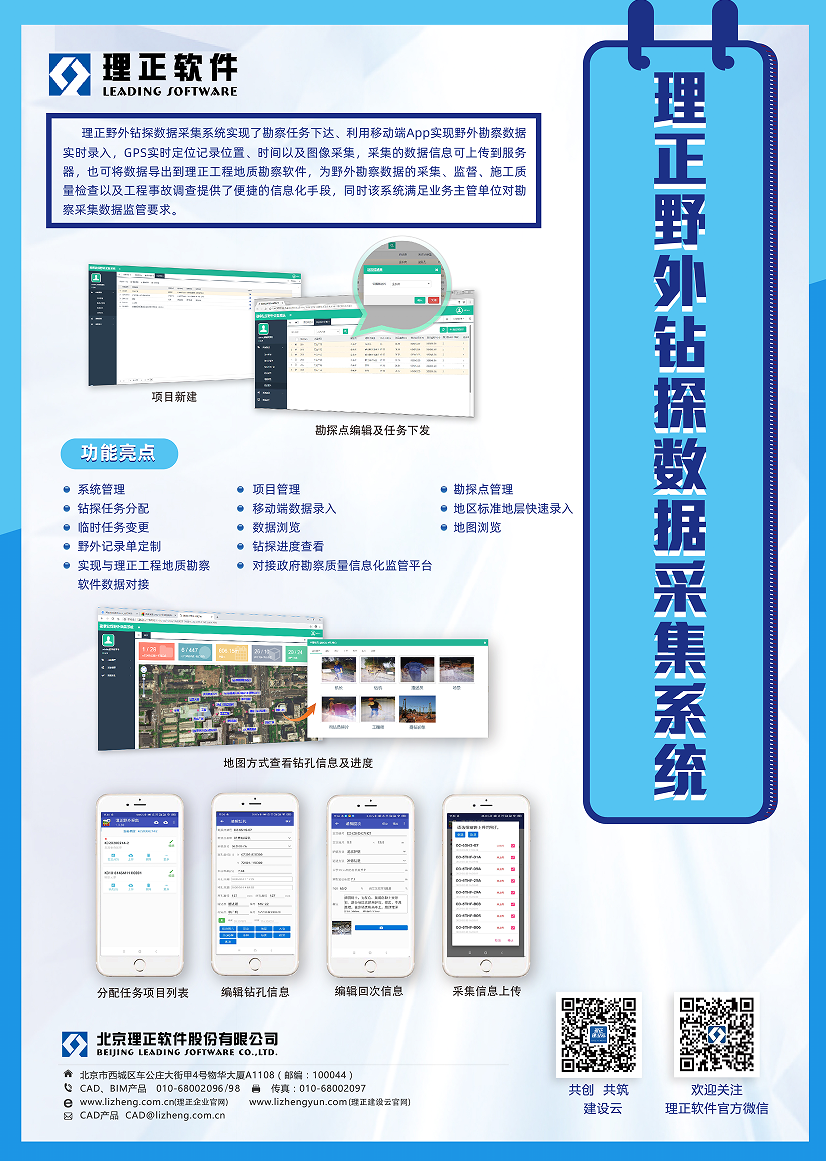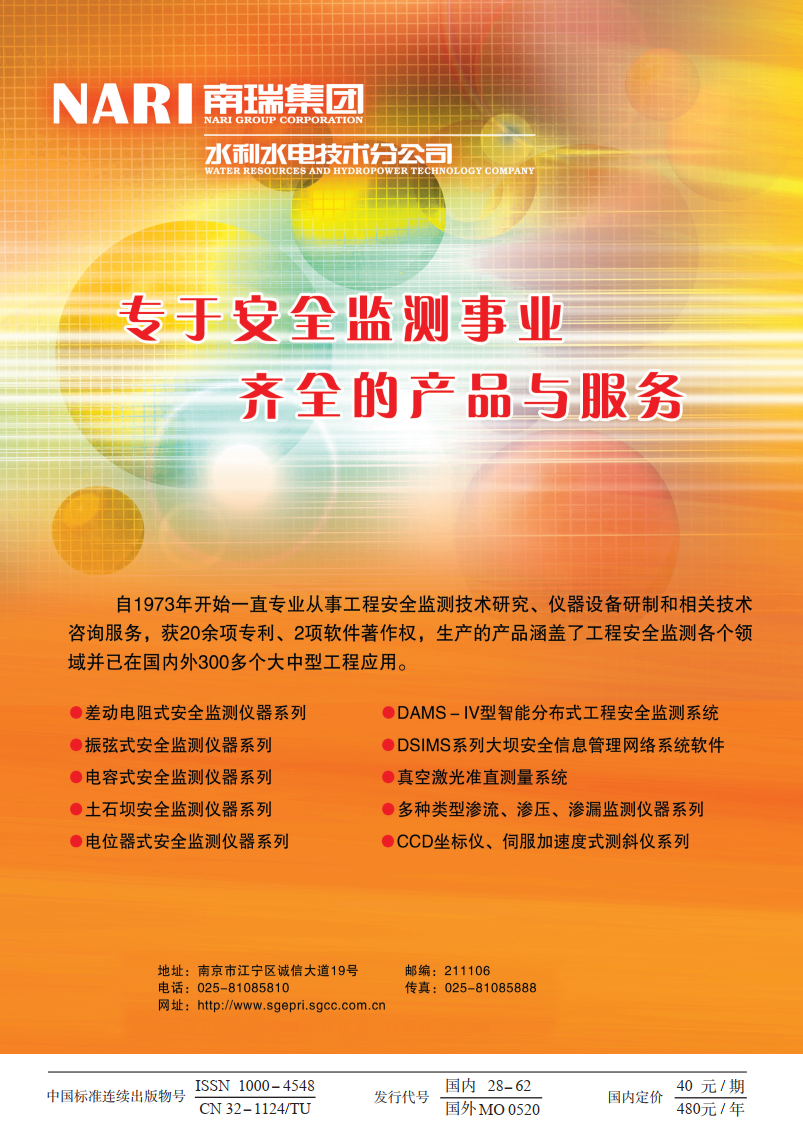Model tests on bearing characteristics of pile foundation in expansive soil foundation under vertical loadings
-
摘要: 利用自主研发的多向桩基加载系统,开展了室内模型试验,研究了膨胀土中桩基分别在最优含水率和饱和含水率条件下的下压和上拔荷载桩基的承载特性。试验结果表明:膨胀土含水率的变化,对抗压桩的极限承载力影响更为明显,对抗拔桩的极限位移影响更为明显。随着含水率的增加,尽管抗压桩和上拔桩的极限侧摩阻力均减小,且减小程度接近,但上拔荷载作用下极限侧摩阻力明显低于下压荷载的极限侧摩阻力。不同含水率条件下,抗压试验桩身极限侧摩阻力呈抛物线形分布,而上拔试验桩身极限侧摩阻力呈线性分布,含水率的增加使抗压桩和上拔桩的极限承载力显著减小,且抗压桩减小幅度更大,但抗压桩的极限承载力始终大于上拔桩的极限承载力。Abstract: Based on the self-developed multi-directional load system for piles a series of model tests are carried out to study the behaviors of compressive and uplift loaded piles in expansive soils with two states of optimal water content and full saturation. The test results show that the change of water content of expansive soils has more significant influences on the behaviors of compression piles than those of tension piles, but more considerable on the deformation of tension piles. The ultimate bearing capacity of compression piles are always greater than that of tension piles. With the increase of water content, the ultimate skin frictions of compression piles and tension piles both decrease, but the ultimate skin friction under uplift load is obviously smaller than that under downward compressive load. Under different water contents, the ultimate skin friction of compressive piles is parabolically distributed, while that of uplift piles is linearly distributed. This is due to the fact that the displacement of the top of the tension piles is larger than that of the compression piles when the pressure piles and the uplift piles reach the ultimate bearing capacity, which makes the deep side friction of the tension piles play more fully. With the increase of water content, the ultimate bearing capacities of compression piles and tension piles decrease significantly, and the decrease of compression piles are even greater, but the ultimate bearing capacity of compression piles are always larger than that of tension piles.
-
Keywords:
- expansive soil /
- pile foundation /
- bearing capacity /
- model test
-
[1] 孙长龙, 殷宗泽, 王福升, 等. 膨胀土性质研究综述[J]. 水利水电科技进展, 1995(6): 10-14.
(SUN Chang-long, YIN Zong-ze, WANG Fu-sheng, et al.The summarizing statement properties of expansive soils[J]. Water Resources and Hydropower Engineering, 1995, 15(6): 10-14. (in Chinese))[2] 刘特洪. 工程建设中的膨胀土问题[M]. 北京: 中国建筑工业出版社, 1997.
(LIU Te-hong.Problems of expansive soil in engineering construction[M]. Beijing: China Construction Industry Press, 1977. (in Chinese))[3] 刘涛, 王勇, 孙吉主, 等. 吸湿环境下膨胀土与桩接触面强度特性试验研究[J]. 岩土工程学报, 2015, 37(增刊1): 161-166.
(LIU Tao, WANG Yong, SUN Ji-zhu, et al.Experimental study on pile-soil interface strength of expansive soil under environment of moisture absorption[J]. Chinese Journal of Geotechnical Engineering, 2015, 37(S1): 161-166. (in Chinese))[4] 缪林昌, 仲晓晨, 殷宗泽. 膨胀土的强度与含水量的关系[J]. 岩土力学, 1999, 20(2): 71-75.
(MIAO Lin-chang, ZHONG Xiao-chen, YIN Zong-ze.The relationship between strength and water content of expansive Soil[J]. Rock and Soil Mechanics, 1999, 20(2): 71-75. (in Chinese))[5] POULOS H G, XU K J.3-D elastic analysis of vertical piles subjected to “passive” loadings[J]. Computers & Geotechnics, 2001, 28(5): 349-375. [6] NELSON J D, THOMPSON E G, SCHAUT R W, et al.Closure of "design procedure and considerations for piers in expansive soils"[J]. Journal of Geotechnical & Geo- environmental Engineering, 2014, 140(8): 07014019. [7] 程永锋, 邵晓岩, 朱全军. 我国输电线路基础工程现状及存在的问题[J]. 电力建设, 2002, 23(3): 32-34.
(CHENG Yong-feng, SHAO Xiao-yan, ZHU Quan-jun.Current situation of foundation works and existing problems for transmission lines in China[J]. Electric Power Construction, 2002, 23(3): 32-34. (in Chinese)) -
期刊类型引用(17)
1. 任连伟,王书彪,孔纲强,杨权威,邓岳保. 综合管廊始发井能源支护桩热力响应现场试验. 岩土力学. 2025(02): 573-581+612 .  百度学术
百度学术
2. 吴行州. 基坑围护桩作用下地层支护应力分析及应用. 城市轨道交通研究. 2024(03): 125-129+134 .  百度学术
百度学术
3. 赵鹏,张东海,李晓昭,张古彬,寇亚飞,高蓬辉. 基于p阶线性模型的地埋管换热器流体温度分布研究. 太阳能学报. 2024(06): 51-59 .  百度学术
百度学术
4. 马奇杰,周超. 非对称循环温度荷载下2×2能源群桩倾斜性状离心机试验研究. 岩土工程学报. 2024(10): 2158-2165 .  本站查看
本站查看
5. 唐丽云,邵海涛,唐华明,邱培勇,杜晓奇,张蕾,彭惠. 寒区道路桥梁融雪除冰技术研究综述. 中外公路. 2024(05): 25-38 .  百度学术
百度学术
6. 谢金利,覃英宏,李颖鹏,蒙相霖,谭康豪,张星月. 能源桩传热特性与热-力响应研究综述. 土木与环境工程学报(中英文). 2023(01): 155-166 .  百度学术
百度学术
7. 刘春阳,方鹏飞,张日红,谢新宇,娄扬,张秋善,朱大勇. 考虑间歇比的地热能源桩热-力性能试验研究. 浙江大学学报(工学版). 2023(03): 562-572 .  百度学术
百度学术
8. 周杨,孔纲强,李俊杰. 夏季工况下扩底能量桩单桩热力学响应分析. 中国公路学报. 2023(05): 65-74 .  百度学术
百度学术
9. 韩志攀,贾新聪,王晓超,牛彦平. 建筑墙体碳排放优化及减碳分析. 建筑结构. 2023(S1): 2356-2360 .  百度学术
百度学术
10. 陈玉,孔纲强,孟永东,王乐华,刘红程. 间歇与持续加热下含承台能量桩基础现场试验. 深圳大学学报(理工版). 2022(01): 75-84 .  百度学术
百度学术
11. 陈树森,赵蕾. 能源群桩与单桩热-力学响应特性对比分析. 地下空间与工程学报. 2022(03): 788-800 .  百度学术
百度学术
12. 吕成钊. 四种保温墙体的动态热响应特性测试. 建筑节能(中英文). 2022(08): 48-51 .  百度学术
百度学术
13. 任连伟,韩志攀,霍继炜,高宇甲. 桩顶约束下桥梁大直径能量桩热力响应现场试验. 防灾减灾工程学报. 2022(05): 937-944+960 .  百度学术
百度学术
14. 陈鑫,孔纲强,刘汉龙,江强,杨挺. 桥面融雪除冰能量桩热泵系统换热效率现场试验. 中国公路学报. 2022(11): 107-115 .  百度学术
百度学术
15. 张精兵,杨军兵,肖勇,海迪,陈智. 深层埋管式能源支护桩埋管形式与换热特性研究. 建筑结构. 2022(S2): 2515-2522 .  百度学术
百度学术
16. 任连伟,任军洋,孔纲强,刘汉龙. 冷热循环下PHC能量桩热力响应和承载性能现场试验. 岩土力学. 2021(02): 529-536+546 .  百度学术
百度学术
17. 孟甲. 钢管桩单桩涂料防腐施工质量管控方式探讨. 珠江水运. 2021(05): 59-60 .  百度学术
百度学术
其他类型引用(17)








 下载:
下载:
